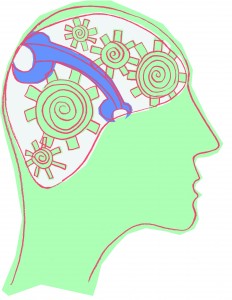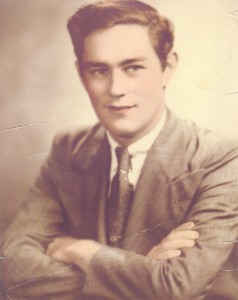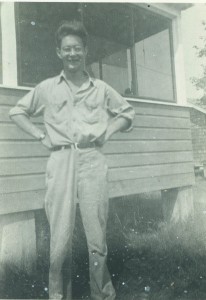MONDAY, 3 OCTOBER 2011
Before the dark knight propelled Christopher Nolan to international fame, there was Momento. Only his second feature film, this was every bit as well received as his later blockbusters. The film’s mind-boggling narrative tells the story of a man who, having been assaulted in his home and suffered brain trauma, finds himself unable to form any new memories. In spite of his handicap, he resolutely sets out to find those responsible. It is an entertaining, if somewhat contrived, account of one man’s struggle to sieve truths from lies when robbed of a most basic mental faculty. In reality, there are individuals who suffer the same plight. Cases of such a mental impairment are relatively well documented and studied, none more so than that of a patient who, before his death, was known simply as H.M. What follows is a brief account of Henry Gustave Molaison, the man who suffered from anterograde amnesia.H.M. experienced epileptic seizures from the age of 10. Though minor at first, the episodes became increasingly severe with age. By the time he was 16, his seizures began to exhibit all the classic features of what is termed ‘grand mal’, a generalised seizure affecting the entire brain. Unfortunately for H.M., his condition proved intractable to medication. It cost him his job and made it impossible for him to have a reasonable quality of life. In an attempt to control his condition, doctors resorted to drastic measures. Neurosurgeon William Scoville performed a bilateral medial temporal lobe resection, removing the inner part of the temporal lobes from both sides of his brain in an effort to eliminate his epilepsy. If the brain is visualised as two commas joined together in the middle, then the temporal lobes are simply the forward curving tails. Structures found deep in the temporal lobes include the amygdala, uncus, hippocampal gyrus, and hippocampus. Our current understanding of the roles played by these structures is still incomplete, but less so than it was in those times. We might, therefore, forgive Scoville for his seemingly reckless move, especially since the technology of that era availed doctors of few other options. Unfortunately, they could not have foreseen the side effects such a resection would have on H.M.
H.M.’s epilepsy abated after the operation. However it quickly became apparent that his memory was severely affected. He had no recollection of his operation and, on one occasion, gave the date as March 1953, when it was really September. Although he could recall many public events that occurred prior to his operation, his memory of autobiographical events for that time was severely compromised. Moreover, postoperatively H.M. could not remember the people he met or the circumstances in which he met them. He carried out conversations normally, but would quickly forget what was said and, when asked, would deny that they had ever taken place. It emerged that his problem was not simply memory loss, but an inability to form new memories. However, formal psychological tests showed that his IQ was above average. In addition, most of his other cognitive abilities, including perception, abstract thinking, reasoning, or even digit span (a measure of short-term memory) were remarkably well preserved. Even more intriguing was the discovery that he was able to acquire new skills such as mirror tracing and puzzle solving. These activities are difficult for untrained individuals but, with practice, can be quickly learned. H.M. practised performing such tasks daily and, over time, became increasingly adept at them. On each occasion however, he would deny having ever done them before.
In the subsequent decades H.M. was studied extensively, first by Brenda Milner and colleagues from the Montreal Neurological Institute, then later by Suzanne Corkin and colleagues from the Massachusetts Institute of Technology. The advent of MRI technology made it possible to define more precisely which structures in his brain bore lesions. Several core findings emerged that later became landmarks in the field of neuroscience. In combination with other work, the studies of H.M. contributed to the development of a mature ‘theory of memory’. Scientists could now distinguish between episodic memory (the memory of events) and that gained from procedural learning through practice. They were also able to rule out the hippocampus as the anatomical location of long-term and short-term memory storage. Instead, it is now believed that the hippocampus is involved in consolidating short-term memories into the long-term store. Although subsequent studies have added complexity to the theory of memory and how it is formed, early studies of patients such as H.M. provided unprecedented insights into the anatomical basis of our everyday behaviour and consciousness.
Of course, H.M.’s case also made neurosurgeons acutely aware of the debilitating side effects of bilateral medial temporal lobe damage. Any such procedures carried out since have been performed unilaterally and only with extreme caution.
Anterograde amnesia is still a relatively common condition in clinical settings. Its causes are as diverse as the illness is dramatic. For example, it is seen in those stroke patients whose medial temporal lobe is damaged as a result of vascular occlusion. Trauma, infections and electroconvulsive therapy may all cause damage to the area and result in corresponding neurological defects. Chronic alcoholics are also prone to this disorder due to thiamine (vitamin B1) deficiency, in which case they are said to suffer from Korsakoff’s syndrome. However, lesions resulting from the above causes are seldom restricted to the medial temporal lobe. In most cases, patients suffer from other cognitive deficits in addition to those seen in H.M.
Advances in imaging technologies have reduced the extent to which clinicians must rely on studies of individuals with lesions in a specific brain region, to determine the particular functions of each of those regions. Still, accumulated knowledge gathered in this way over the decades has allowed many treatment and management strategies to be developed. H.M.’s case remains a stark reminder of the importance of memory to our existence. Without it, we could experience neither lasting joy nor deep pain. Our personalities and habits would be inexplicable, even to ourselves. There would be no friendship or antipathy, because neither could last for more than a fleeting moment. Corkin reported that H.M. had little idea of who she was despite their being acquainted for over 45 years. She had to introduce herself every time they met. He could read the same magazine article over and over again and laugh at the same joke every time. Sadly, he gradually became aware of his shortcomings: “every day is alone in itself,” he related, “whatever enjoyment I’ve had, and whatever sorrow.”
Henry Molaison’s contribution to science for more than fifty years concluded upon his death in December 2008, with the donation of his brain to the Massachusetts General Hospital for preservation and documentation. However, he remained unaware of his fame and the impact that his participation in research had, and would continue to have, on science and medicine over many decades.
Yinchu Wang is a 3rd year medical student in the Department of Physiology



